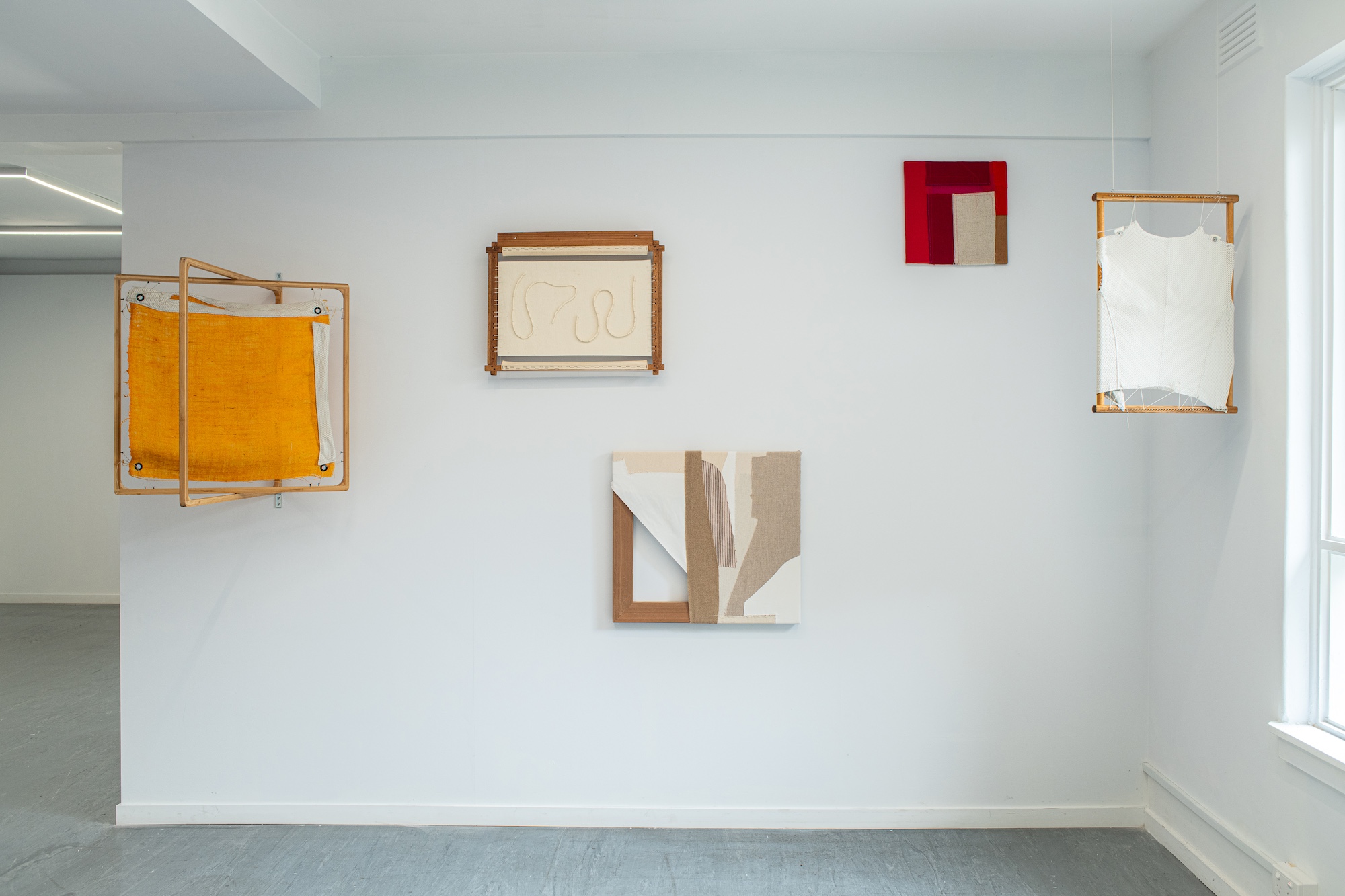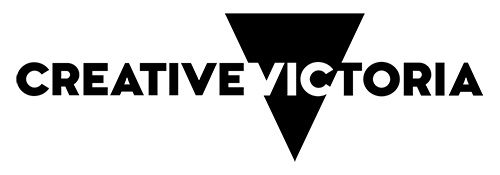Textile (Inter)action presents new artworks by Naarm/ Melbourne-based artists Helvi Apted, Britt Salt, and Shannon Slee. Alongside these works is a collaborative textile installation that invites the public to become part of the exhibition. These artists share an interest in the way textile techniques are passed down over time through generations, expand across cultures, and how the act of making together incites people to exchange stories and skills. In preparing for this exhibition, the artists challenged their distinct studio methodologies by working closely with one another. The result is a suite of new works that collapse the boundaries between the artists’ textile practices - stitches are repeated, forms replicated, and materials shared. The artists gathered material scraps from this process and reassembled them as collaborative works, stretching them over repurposed timber frames that were found in the storeroom of the Handweavers and Spinners Guild, and hard rubbish. Visitors are invited to join in this collective artmaking by utilising materials from the artists’ studios to create a textile collage in the centre of the gallery that will evolve throughout the exhibition. On the surrounding walls, a suite of artworks by each artist explores new techniques and territories of interest that continue to expand their individual practices.
For Textile (Inter)action, Shannon Slee presents three textile works of piecing, embroidery and weaving specifically dedicated to the brightly coloured geranium plant. Geraniums, commonly seen in Melbourne gardens, are noted in the text Eve’s Herbs by John Riddle as one of the plants valued historically for their role in sustaining women’s reproductive health. Looking to replicate and understand the geraniums unrestrained colour, Shannon turned to textile habits which not only link materials but play with geometries. This work is part of a broader project for Shannon which imagines a sustained connection between textile work, abstracted geometries and plants that hold historical and almost forgotten reproductive knowledge.
The Monochromes by Britt Salt are born out of the time she spent as artist in residence at a high-end fashion house earlier this year. Britt was drawn to the cutting tables of the studio where offcuts and scraps of fabric intermingled in baskets. Their soft skins traced the negative shapes of clothing patterns cut by the dressmaker. She found them beautiful, even if they hadn’t made the grade to become a coveted garment. Britt set about carefully collecting and ordering these fabrics by colour, shape, and size, attending to the unique qualities of each piece as a site of possibility. She turned them this way and that, flipped them, aligned them from different angles, and stitched each slowly by hand, considering them anew. The resulting works reconcile disparate parts in a unified yet unique whole that cannot be replicated (unlike garments). They occupy a space between obsoletion and utility, a space where transformation is possible.
Quietly framing space, Helvi Apted has sewn together a series of felt sculptures in the shape of small alcoves. These recessed spaces are often used to display devotional objects, or can be small spaces for retreat, away from a main area of activity. Helvi has reinterpreted the alcove in textiles to explore the potential of this form for contemplative practices in contemporary settings. The manufactured felt used to construct the Alcove series is made of visible threads and pulp from discarded garments that have been compressed into a uniform surface. This tapestry of remnant materials carries potential histories that speak to a common human experience, and the need for reconstitution and repair.
.


_2024_Manufactured-felt-thread-glass-beads_-26-x-19-x-6-cm-_Photo-by-Tobias_Titz_.jpg)


.png)

